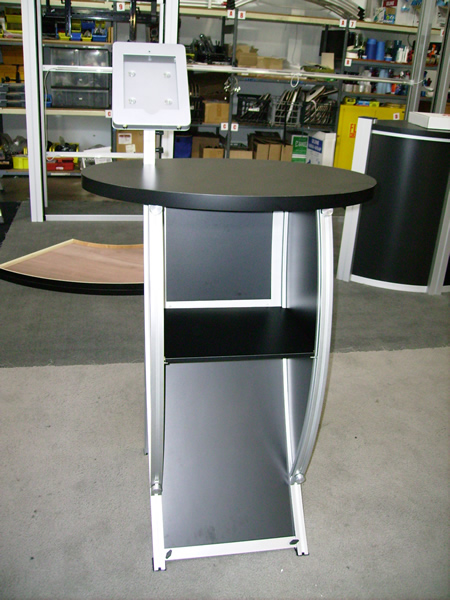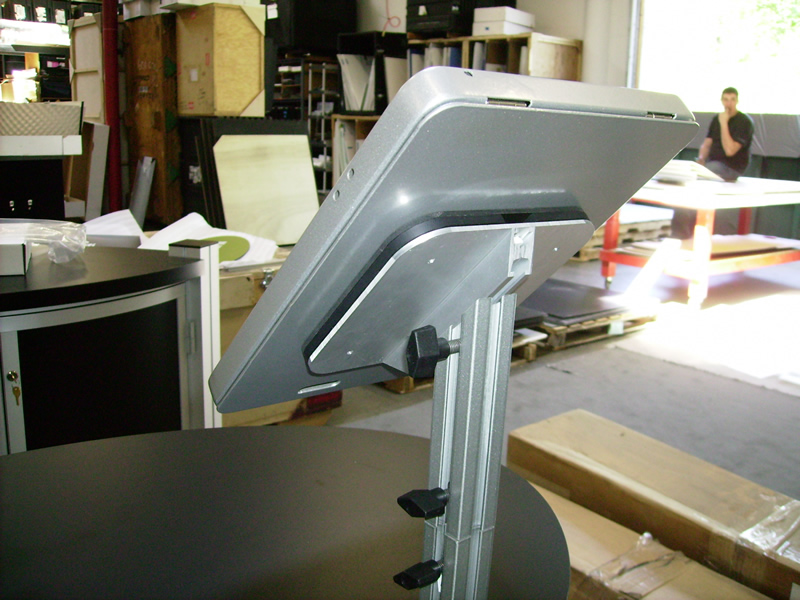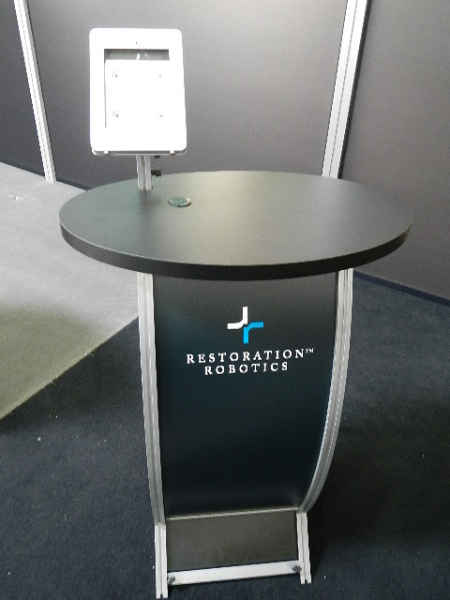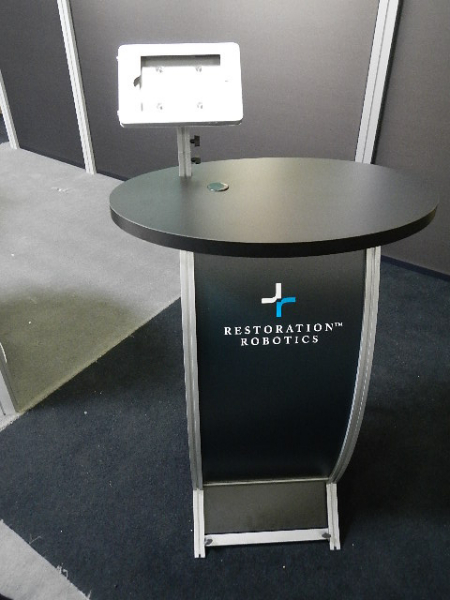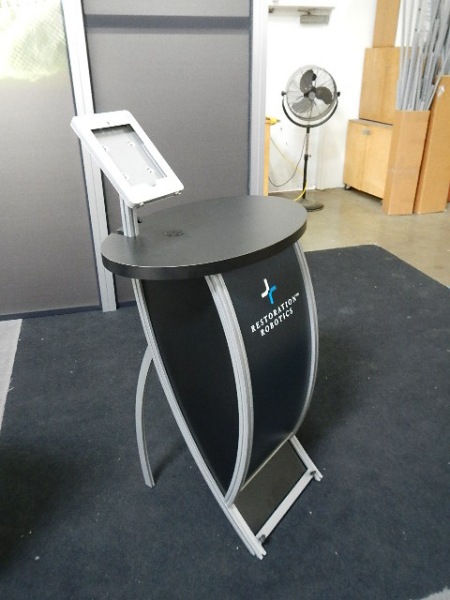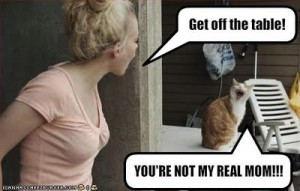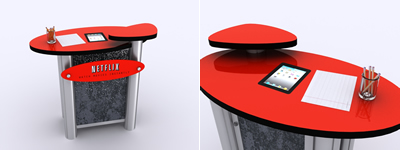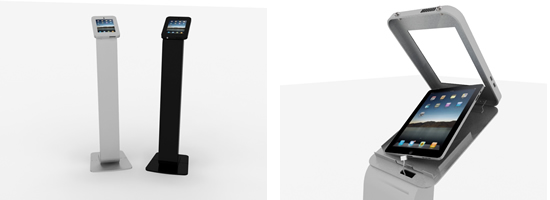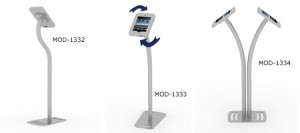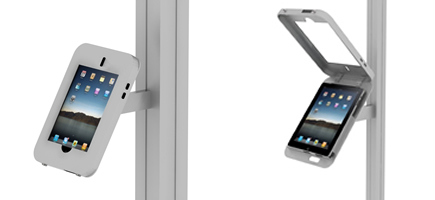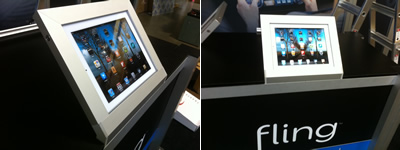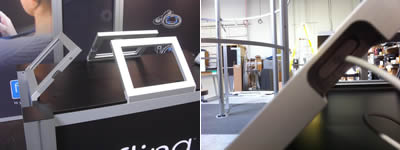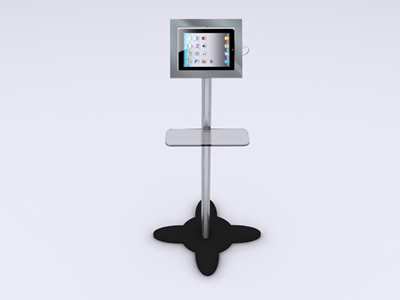Our exhibit rental business continues to surge. There’s never a dull day in the Classic Rental Division. And that’s what I like about what we do here.
Flexibility and customization has been the key to our continued growth.
If we were limited to a few select “kits” or standard design offerings, it just wouldn’t be the same. But with our flexibility in offering customization to our rental exhibit designs, our days are much more interesting! Customization isn’t limited to large projects. It can be as simple as coming up with a way to connect an iPad holder to a workstation or kiosk. Or working curved headers and towers into a rental design.
Here are four recent rental projects that I’d like to share with you.
10′ x 20 “Vigilant Robots” Inline Rental Exhibit
(VIP EXHIBITS, Sherri Harrod)
- 10′ x 20′ back wall using our ClassicMODUL TSP 50 fabric retaining extrusion profile & rear supporting structure.
- (2) Flat canopies with black fabric covers
- (1) One-piece SEG fabric graphic
- (5) Halogen arm lights
20′ x 20′ “LabCorp” Island Rental Exhibit
(Poretta & Orr, Ed Koebert)
- 16′ high tower with storage access
- Curved bridged headers
- Workstation kiosks
10′ x 20′ “ARTAS” Inline Rental Exhibit
(ColorZone, Joshua Feller)
- 10′ x 20′ Backlit back wall structure
- (2) RE-1213 Counters with attached iPad holders
- (1) MOD-1167 Reception counter
- (2) Large monitor mounts
10′ x 20′ “Kobos Coffee” Inline Rental Exhibit
(Hawkwing, LLC, Taka Saito)
- 10′ x 20′ Extrusion back wall
- 10′ Arch-canopy used for header graphic application
- (2) Small monitor mounts
- (5) RE-1201 tapered counters
- (8) Small clear acrylic shelves
I’ve been in this business since rocks were tools, and I still love working with our team on new ideas and solutions for your clients. It’s a lot of fun to watch a concept on paper become a reality on our staging floor and in your customer’s booth.
Please send us your thoughts on new trends that you see with rental exhibits.
Jim Shelman
General Manger
Exhibits Northwest & Classic Rental Division
jshelman@exhibitsnw.com
*********************************
Based in Portland, Oregon, Classic Exhibits Inc. designs and manufacturers portable, modular, and custom-hybrid exhibit solutions and engineered aluminum extrusions (ClassicMODUL). The Classic Rental division offers an extensive gallery of inline and island exhibits with flexible customization options. Classic Exhibits products are represented by an extensive distributor network in North America and in select International markets. For more information, contact us at 866-652-2100.


























